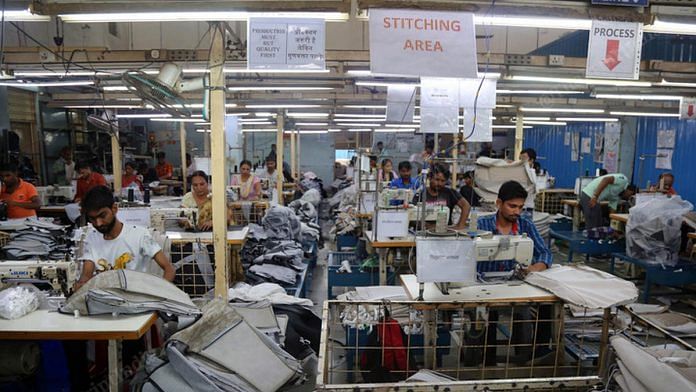Gurugram: Rohit Kumar, a 25-year-old from Sampla town in Haryana’s Rohtak, is battling tough odds. He has applied for a constable position in the Haryana police twice, without success. He has also applied for a Group D government peon job this July. If he doesn’t get through, it’s unclear when he’ll get another shot — before this year, Haryana last advertised Group D jobs in 2017.
It’s not that Rohit, jobless for years, has no other options. His home is just 18 km from Bahadurgarh, an industrial town where lakhs of people work in unskilled or semi-skilled factory jobs. But Rohit does not want this option, even if it’s the only one he has.
“I know my father needs me to support the family by earning, but I can’t think of working in a factory,” Rohit told The Print at Bahadurgarh town Saturday.
Rohit’s story mirrors the inner struggle of many unemployed youth in Haryana.
While the state government notified a law in January 2022 reserving 75 percent of private sector jobs with a salary cap of Rs 30,000 for Haryana residents, the state’s youth do not want to work in factories.
Many companies too would rather hire workers from Bihar and Uttar Pradesh, say industry insiders.
At the same time, central government data shows unemployment levels have soared in the state, tripling between 2013-14 and 2021-22.
Against this backdrop, ThePrint travelled around Haryana’s industrial centres to see whether the state’s private sector reservation law has helped the situation.
What became evident is that the aspirations of local youth transcend the current challenges of unemployment and the practical solution of job reservations. The majority are not interested in industrial employment, but instead chase dreams of a sarkaari naukri (government job).
According to N.K. Bishnoi, professor of economics at Guru Jambheshwar University of Science and Technology, Hisar, a higher per capita income and unemployment go hand-in-hand in the state.
“Haryana is among the states with better per capita income. In February this year the state government had stated the per capita income of Rs. 2.75 lakh against the national figures of Rs. 1.97 lakh. When income goes up, education also goes up and so goes the social status in a state. In such a scenario expecting an unemployed youth from Haryana to work for the wages of others from Uttar Pradesh, Bihar or any other state with lower per capita incomes seems unreasonable. If the government really wants to provide employment to the youths, it needs to improve the quality of employment in terms of wages,” Bishnoi added.
Also Read: Jobless Haryana men have a new mission in Muslim hate. ‘They think cow protection is govt job’
‘Don’t want to work with Biharis, UPites’
Rohit Kumar’s 58-year-old father single-handedly supports a family of six, including his elderly parents, by running a small grocery shop.
Rohit is acutely aware that the family needs him to contribute financially too, but as of now, he does not see himself knocking on the doors of a factory.
When asked why, he was reluctant to answer, but upon being pressed he gave two reasons. The first was the prospect of a low salary and the second was the fear that he would be ridiculed by friends if he joined the ranks of workers from Uttar Pradesh and Bihar.
Joginder Singh, a former sarpanch of Soldha village in Jhajjar district’s Bahadurgarh tehsil, said this viewpoint was rampant in Haryana.
“Our children can’t do factory jobs. First, the pay of Rs 10,000-12,000 is too low. Secondly, they consider certain chores like making footwear or stitching clothes in garments units below their dignity. Also, they are not comfortable working with workers from Bihar and Uttar Pradesh who unfortunately are looked down upon by some locals in Haryana,” Singh explained.
According to him, even the industry is reluctant to hire local workers.
“Industries think they can exploit the workers from Bihar and Uttar Pradesh in the manner they like. But if they do any injustice to local people, they can’t get away with it, because workers have support from Haryana villages,” he added.
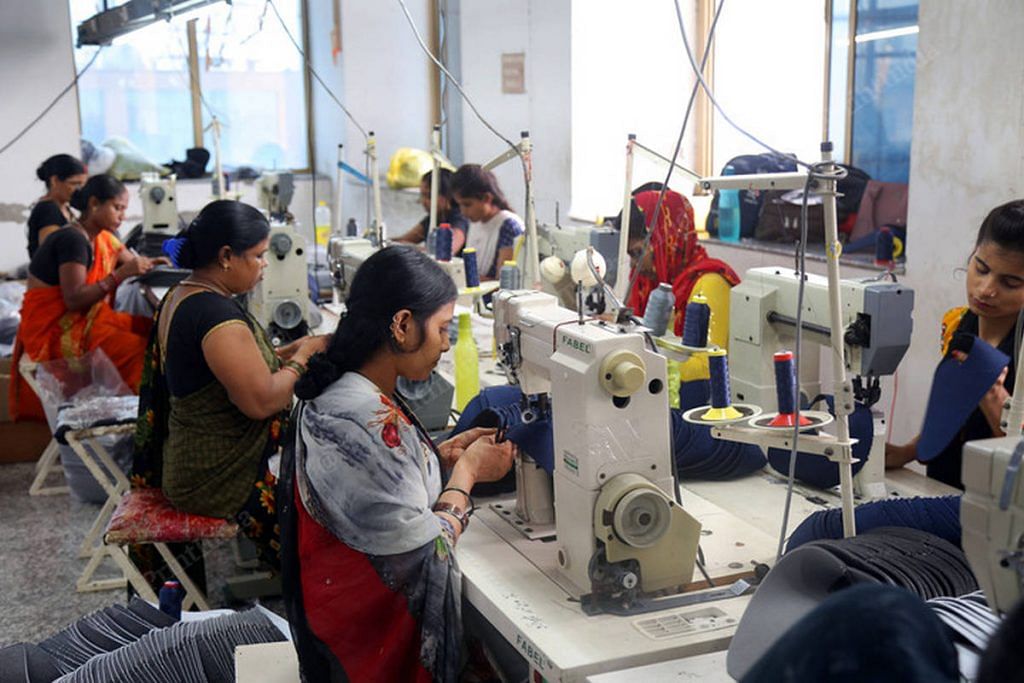
Another factor that plays into the reluctance to seek factory jobs is pride over the ownership of land, said Mohit Bhardwaj, a tehsil-level politician with the Jannayak Janta Party (JJP) from Alawalpur village in Palwal.
“A farmer with 1 hectare (2.5 acres) of agricultural land is considered a marginal farmer, and one with 2 hectares (5 acres) is referred to as a small farmer in our country. However, in the NCR areas of Bahadurgarh, Gurugram, Faridabad, and Sonipat, owning 5 acres of land could mean the person is worth Rs 25 crore or more,” Bhardwaj told ThePrint.
“Even if this doesn’t mean liquid cash in hand, it becomes below the dignity of children of such farmers to do menial jobs,” he added.
Rising unemployment, flawed solution?
A report for December 2022 by think tank Centre for Monitoring Indian Economy (CMIE), released in January this year, showed that Haryana had the highest unemployment rate in India, at 37.4 per cent, compared to the national unemployment rate of 8.3 per cent.
This statistic drew criticism from opposition parties in Haryana, who accused the state’s BJP-JJP government of failing to make good on promises to provide employment.
In response, Chief Minister Manohar Lal Khattar disputed these figures. Asserting that the government possessed comprehensive data on all families in the state through its Parivar Pehchan Patra (PPP) scheme, he claimed that the actual unemployment rate was no more than 5 to 6 percent.
The figures provided by the Union government, however, differ from this. In July this year, Minister of State for Labour and Employment Rameswar Teli told Rajya Sabha in reply to a question by Congress leader Deepender Singh Hooda that the unemployment rate in Haryana has increased three-fold from 2.9 percent in 2013-14 to 9 percent in 2021-22.
Meanwhile, to address the problem of unemployment, the Haryana government introduced the Haryana State Employment of Local Candidates Act in 2020, which came into effect in January 2022. This legislation mandates that employers reserve 75 percent of jobs with gross monthly wages up to Rs 30,000 for local candidates.
But the law immediately ran into trouble, amidst criticism that it would increase the compliance burden of industries, give undue powers to the government, and also hinder Haryana’s growth story. There were also concerns around the shortage of skilled industrial labour in the largely agrarian state, where about 70 percent of the population is engaged in agriculture, according to the website of the state Agriculture Department.
Based on petitions from industry bodies, the Punjab and Haryana High Court stayed the operation of the law in February 2022. However, during the same month, the Supreme Court lifted the stay, with the condition that the state government refrain from taking coercive measures against private employers until the high court reached a final decision.
‘Law will be implemented properly after HC order’
The Print caught up with JJP leader and Haryana Deputy Chief Minister Dushyant Chautala at a rally in Faridabad’s Mohna village Sunday.
The quota, notably, was part of JJP’s manifesto in the 2019 assembly polls, and it was upon Chautala’s insistence that the bill was brought into the state assembly.
“First of all, I don’t go by any unemployment figures, because these figures aren’t static but dynamic in nature,” said Chautala, who also holds charge of the departments of industry and labour & employment.
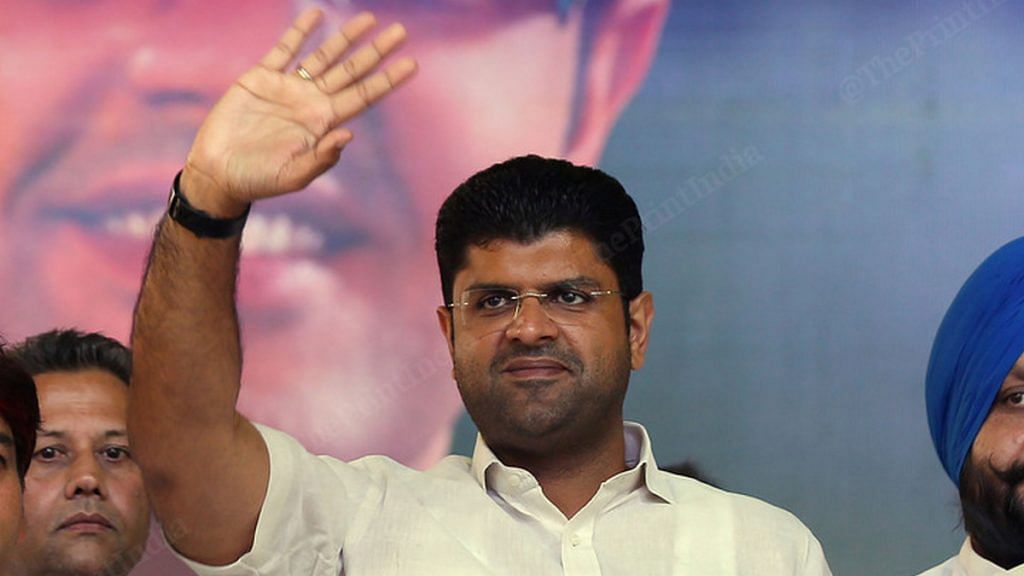
Nevertheless, he added that he believed that the 75 percent quota would improve the employment landscape of the state once the law was properly implemented.
This, he noted, had not yet happened because of the Supreme Court’s order restraining the state government from taking any coercive action against industries.
“As far as government jobs are concerned, there is stability and job security associated with it. But the jobs in the private sector are not so. The private sector offers jobs when they have work and may ask some of its workers to leave the moment, they don’t have enough work to do,” he explained.
Chautala said that once the high court passes a final order in the case, the government hopes to enforce all aspects of the law.
However, industry insiders and government officials pointed out that certain ground realities cast doubt on the law’s potential effectiveness.
Anything for a government job
Industry job fairs reveal a lot about the employment attitudes of youth in Haryana, according to Rakesh Chhabra, president of the Rai Industries Association and vice-president of the Federation of Indian Micro, Small, and Medium Enterprises (MSME).
He said that despite the best efforts of the industry, including providing them necessary skills, local youth from Haryana are not interested in factory jobs.
He gave the example of a job fair that the Rai Association, which acts as a bridge between MSMEs and government departments, had organised in 2019 to fulfill a requirement for 2,200 workers.
“When we inquired from the local employment exchange, we were informed that 44,000 youths were registered with the exchange. We organised a special job fair but just 562 people came for it,” he said.
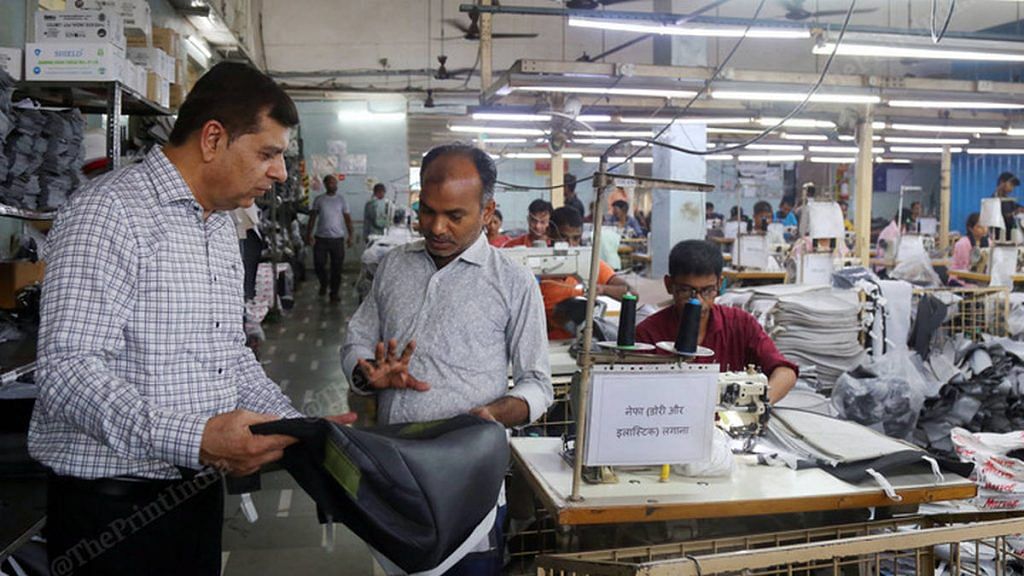
The situation is not any better now, he added.
“Every three months, we hold an antyodaya (upliftment) fair to employ people. In March 2023, just 23 people came to attend the fair. Of these, seven were selected, but even they didn’t report for duties when offered jobs,” Chhabra said.
Many people in Haryana, he pointed out, get by on passive sources of income.
“In Haryana villages, particularly in the NCR region, people have enough resources to make a living. People with small residential plots have built four-storied houses and earn decent rent. Some others have constructed shops for renting out. Their children are not ready for a job that offers them Rs 10,000 to 12,000 a month,” Chhabra said.
The other major factor is a hankering for government jobs.
Savita Lamba, district employment officer in Sonipat, said that many people don’t register with employment exchanges just to get any job.
“There was a time when class 3 and class 4 jobs were offered by the government through the employment exchanges alone. It is not the case now. But still, many people think that registering one’s name with the employment exchange will get them a government job,” she said.
Others, Lamba added, register with the exchange solely for benefits.
“The second reason for registration with the employment exchanges is the unemployment allowance being paid by the Haryana government. In some cases, even those who are employed somewhere keep their names listed in the employment exchanges. We keep a tab on such cases and immediately strike off the names of non-genuine ones,” she said, adding that 25,000 people are currently registered in Sonipat district’s employment exchange.
The Haryana government pays Rs 900 per month as unemployment allowance to 12th-pass unemployed youth and Rs 1,200 to graduates. Besides this, the government pays Rs 60 per hour for 100 hours in a month to youth who are selected under the Saksham scheme of the government.
Meanwhile, the supply of government jobs falls far short of meeting the demand.
“I do admit that due to Covid, the Haryana Public Service Commission and the Haryana Services Selection Commission have not been able to conduct examinations for government jobs in time,” Deputy CM Chautala told ThePrint. “But though there is definitely a backlog in government jobs, that should not be counted as unemployment because the government will fill those jobs sooner or later.”
Factory workers largely from outside Haryana
Despite the law mandating that 75 percent of private sector factory workers should be from Haryana, barely 10 percent of the total industrial workforce in Gurugram is from the state, said Animesh Saxena, president of Udyog Vihar Industries Association, Gurugram.
“They don’t have the skillsets required for the jobs in the industry. Even when we offer them training, they are not mentally prepared for the blue-collared jobs that the industry offers them,” Saxena added.
He attributed this partly to Haryana’s agrarian moorings.
“Haryana has always been an agricultural society. The culture and mindset of Haryanvi youth don’t allow them to do blue-collared jobs. However, with the passage of time, the landholdings of people are shrinking. Therefore, we hope that more people from Haryana will start coming forward to join the workforce in the industries,” Saxena said.
It’s a similar story in Bahadurgarh, Haryana’s oldest industrial town. The first industrial estate of undivided Punjab was built here in 1951.
“Today, the country’s biggest footwear park is in Bahadurgarh with 2,500 to 3,000 footwear and ancillary units together manufacturing 60 percent of the country’s non-leather footwear,” said Narinder Chhikara, senior vice-president of the Bahadurgarh Chamber of Industry and Commerce when The Print met him at his residence Saturday.
“You name any footwear brand and its shoes are being manufactured in Bahadurgarh,” he added.
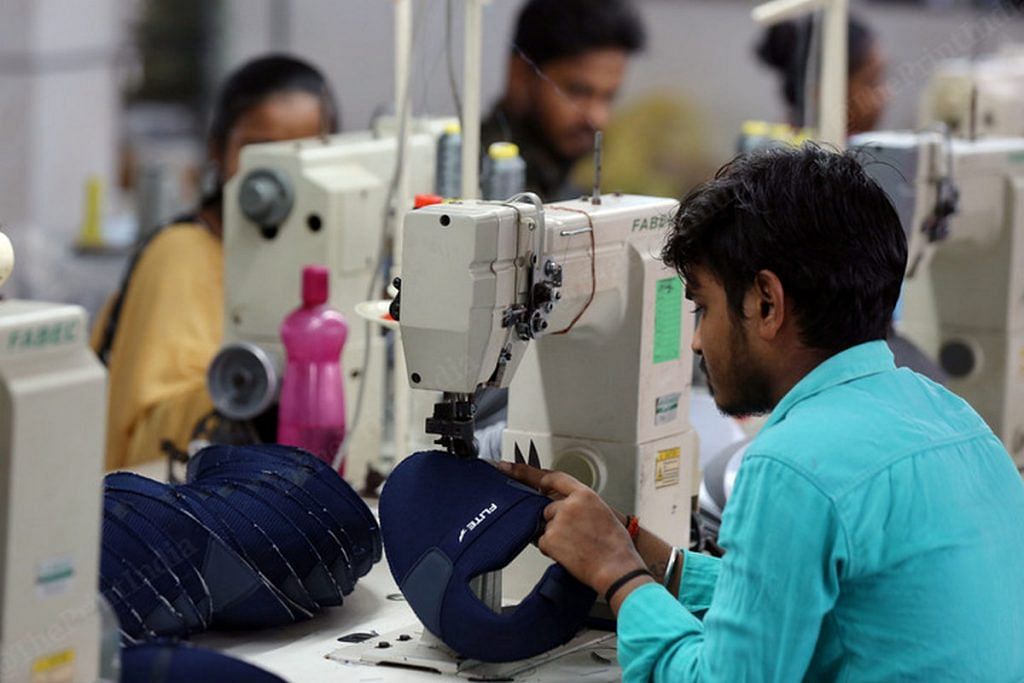
However, Chhikara said that this thriving Haryana industry is powered largely by people from other states.
“The industry employs 2.5 lakh to 3 lakh workers, of which hardly 25,000 are from Haryana. The rest all come from Uttar Pradesh and Bihar. Even this small number of workers from Haryana largely comprises women,” he said.
“Youth from Haryana are not just interested in working. The footwear industry is so huge that there is a scope to employ at least one lakh more people here. We have set up a skill development centre called Bahadurgarh Footwear Development Services (BFDS), where we have the capacity to train 15,000 people in manufacturing as well as testing. However, hardly anyone approaches us from Haryana villages,” he said.
When ThePrint visited BFDS, its administrator Sidharth Dubey showed off the state-of-art equipment and machines. He said that trainees are given free meals and are guaranteed placement upon completion of training, but even then there are few takers from Haryana.
Companies don’t want Haryanvi workers?
There are certain pitfalls that come with employing workers from Haryana, said Subhash Jagga, president of the Bahadurgarh Footwear Association. “They are more interested in politics than work,” he alleged.
Chhikara added that in case of disputes or accidents, local strongmen come into the picture at times.
“In industries, accidents can happen at any time despite the observance of the best practices. In such a scenario, the industrialists always do their best to help out the accident victims. But in case the victim is from Haryana, the local leaders create so much of a nuisance that it becomes very tough for us to manage,” he said.
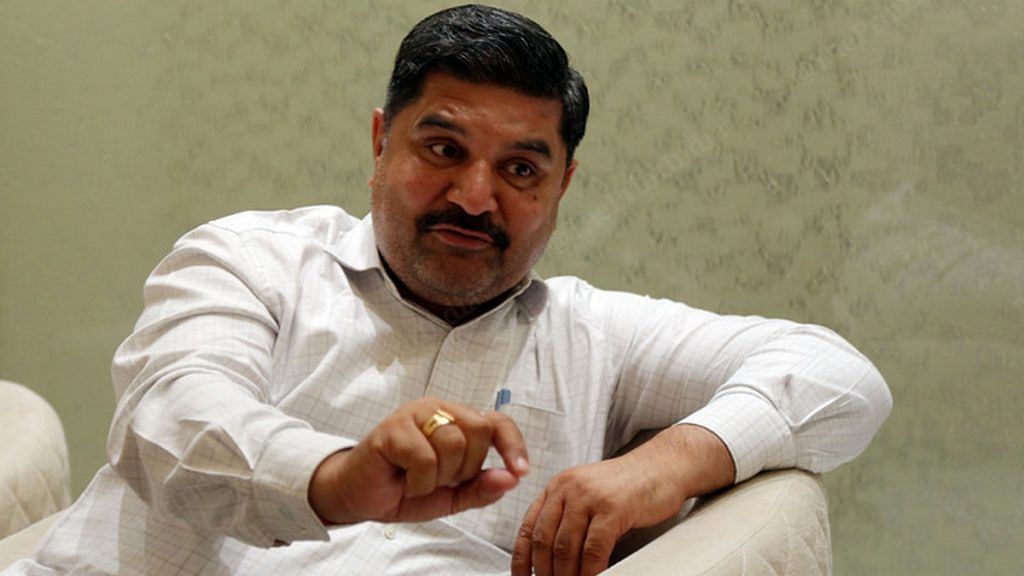
Notably, at least one of the government’s attempts to encourage employment of local workers came at a heavy cost.
Chautala told ThePrint that when multinational company Jay Bharat Maruti (JBM) invested in Haryana, it signed an MoU with the state government that it would provide 75 per cent of its jobs to local youth— however, in return, the government is paying the company Rs 48,000 per employee per year for 10 years.
Industry still seems to like Haryana
Chautala said that before 2014, when the Congress was in power, some industrial sectors, such as machinery and automotive manufacturing, shifted their base from Haryana.
But during the last four years, not a single industry has left Haryana, he claimed.
“We were able to convince Maruti to invest Rs 14,000 crore in a 900-acre plant at Kharkhoda in Sonipat, Suzuki Motorcycle set up a plant on 100 acres at the same venue, Flipkart is making Asia’s biggest warehouse on 140 acres with seven stories at Manesar, Chinese company ATL Technology is coming up with a battery-manufacturing plant in Mewat district, JBM has set up its India’s first bus-making plant on 80 acres in Palwal,” said Chautala.
He added that adding that these developments hold the potential to create numerous job opportunities for youth in Haryana.
Chautala did not specify how this reconciled with his previous statement that Haryana’s youth are not interested in factory work.
He did, however, acknowledge that “certain jobs were of such a nature that people from a particular state have the expertise over them”.
“We don’t have an intention to replace those people with unemployed youth from Haryana,” he added. “But so far as skilled labour is concerned, where ITI (Industrial Training Institute)-trained people are employed, the government is definitely working towards that.”
He said that during the past four years, investments worth nearly Rs 34,000 crore have come to the state through the establishment of MSMEs.
(Edited by Asavari Singh)


